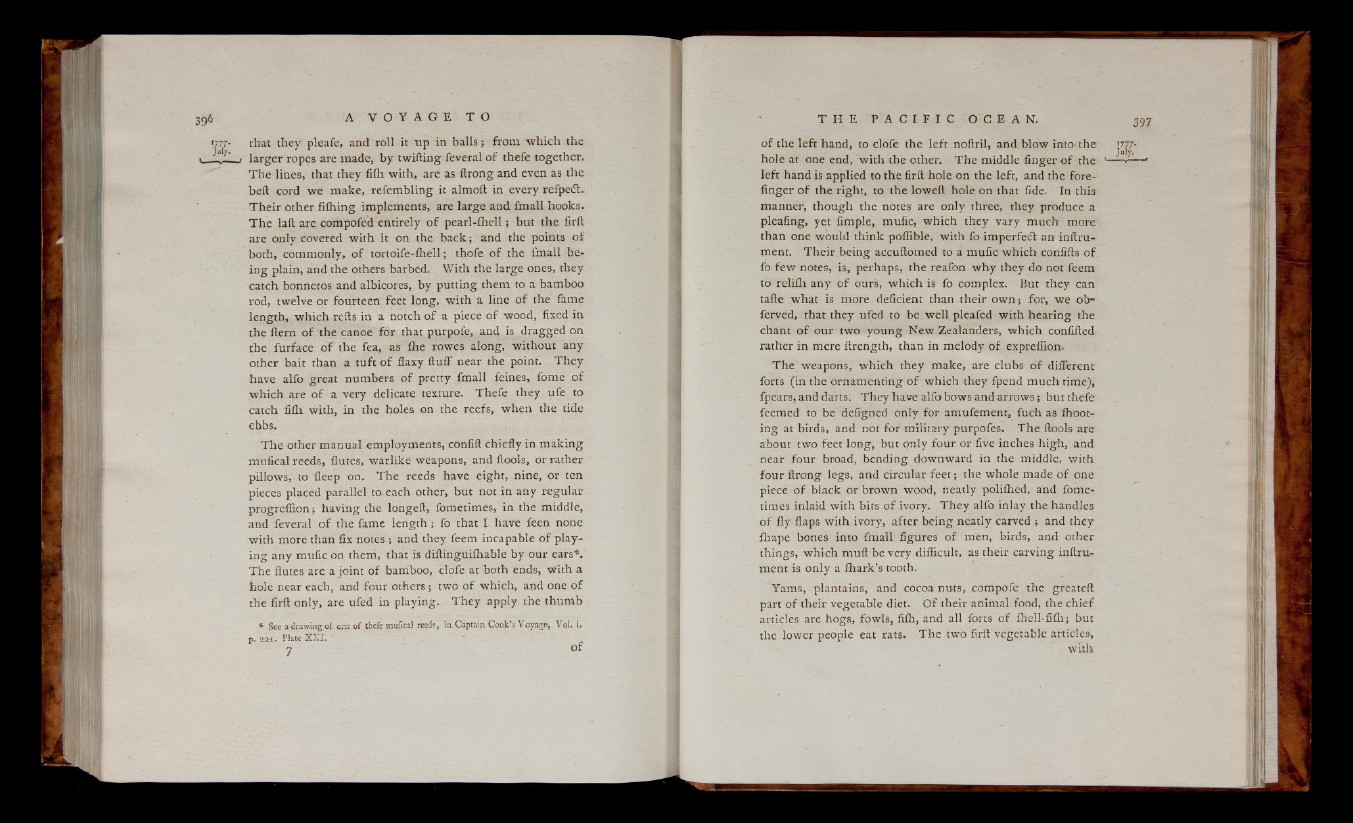
396 A V O Y A G E T O
1777- that they pleafe, and roll it up in balls; from which the
■ \ r' • larger ropes are made, by twilling feveral of thefe together.
The lines, that they fiih with, are as ftrong and even as the
beft cord we make, refembling it almoft in every refpedi.
Their other filhing implements, are large and fmall hooks.
The laft are compofed entirely of pearl-fhell; but the firft
are only covered with it on the back; and the points of
both, commonly, of tortoife-fhell; thofe of the fmall being
plain, and the others barbed. With the large ones, they
catch bonnetos and albicores, by putting them to a bamboo
rod, twelve or fourteen feet long, with a line of the fame
length, which refts in a notch of a piece of wood, fixed in
the ftern of the canoe for that purpofe, and is dragged on
the furface of the fea, as Ihe rowes along, without any
other bait than a tuft of flaxy fluff near the point. They
have alfo great numbers of pretty fmall feines, fome of
which are of a very delicate texture. Thefe they ufe to
catch fiih with, in the holes on the reefs, when the tide
ebbs.
The other manual employments, confift chiefly in making
mufical reeds, flutes, warlike weapons, and ftools, or rather
pillows, to fleep on. The reeds have eight, nine, or ten
pieces placed parallel to. each other, but not in any regular
progreflion; having the longeft, fometimes, in the middle,
and feveral of the fame length; fo that I have feen none
with more than fix notes ; and they feem incapable of playing
any mufic on them, that is diftinguifhable by our ears*.
The flutes are a joint of bamboo, clofe at both ends, with a
hole near each, and four others ; two of which, and one of
the firft only, are ufed in playing. They apply the thumb
* See a drawing of one of thefe mufical reeds, in Captain Cook’s Voyage, Vol. i,
p. 221 ■ Plate XXI. ,
7 of
of the left hand, to clofe the left noftril, and blow into the ’777-
J u l y .
hole at one end, with the other. The middle finger of the '----■—-*
left hand is applied to the firft hole on the left, and the forefinger
of the right, to the loweft hole on that fide. In this
manner, though the notes are only three, they produce a
pleafing, yet fimple, mufic, which they vary much more
than one would think poflible, with fo imperfedl an inftru-
ment. Their being accuftomed to a mufic which confifts of
fo few notes, is, perhaps, the reafon why they do not feem
to reliih any of ours, which is fo complex. But they can
tafte what is more deficient than their own; for, we ob-
ferved, that they ufed to be well pleafed with hearing the
chant of our two young New Zealanders, which confifted
rather in mere ftrength, than in melody of expreflron.
The weapons, which they make, are clubs of different
forts (in the ornamenting of which they fpend much time),
fpears, and darts. They have alfo bows and arrows; but thefe
feemed to be defigned only for amufement, fueh as fhoot-
ing at birds, and not for military purpofes. The ftools are
about two feet long, but only four 01- five inches high, and
near four broad, bending downward in the middle, with
four ftrong legs, and circular feet; the whole made of one
piece of black or brown wood, neatly poliihed, and fometimes
inlaid with bits of ivory. They alfo inlay the handles
of fly-flaps with ivory, after being neatly carved ■, and they
ihape bones into fmall figures of men, birds, and other
things, which muft be very difficult, as their carving inftru-
ment is only a fhark’s tooth.
Yams, plantains, and cocoa nuts, compofe the greateft
part of their vegetable diet. Of their animal food, the chief
articles are hogs, fowls, fiih, and all forts of fhell-fifh; but
the lower people eat rats. The two firft vegetable articles,
with